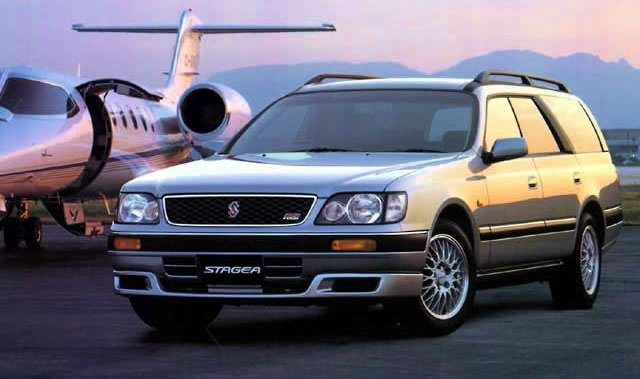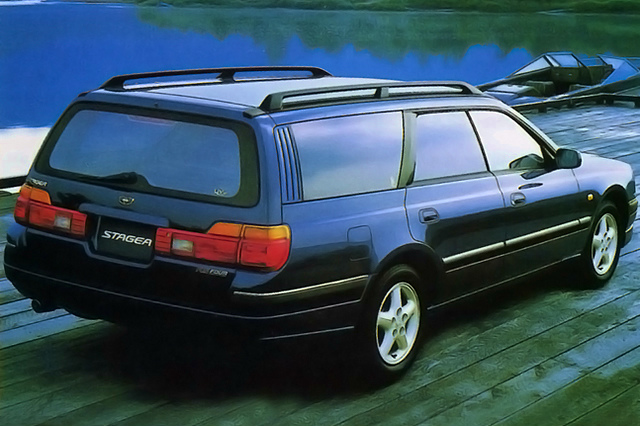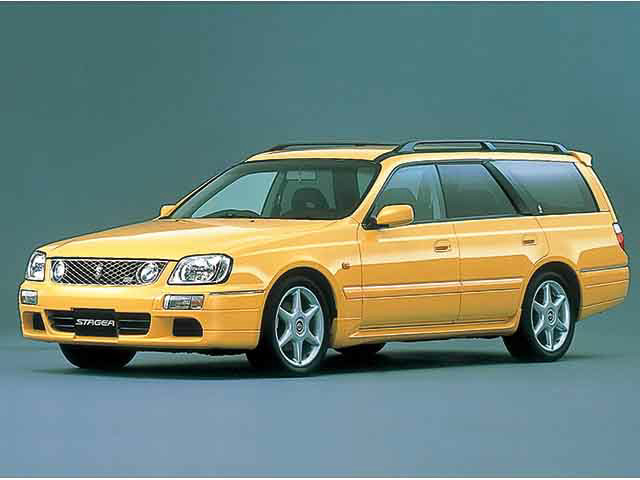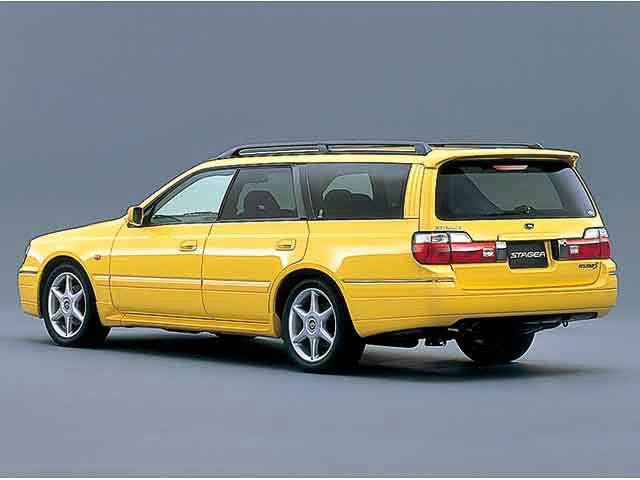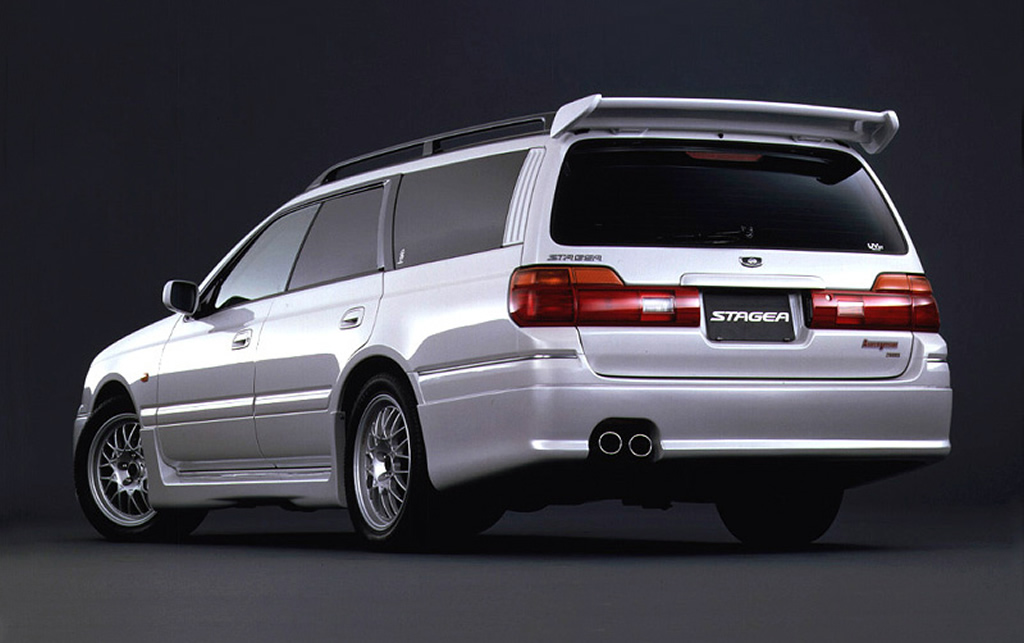In the mid 90’s the station wagon market was growing in Japan. Nissan did not have a large size wagon in their line-up and the success of the Subaru Legacy was not unnoticed. So in September 1996 Nissan released the Stagea under the Prestige Touring Wagon concept focusing on a high quality wagon with high driving performance.
The first generation of the Stagea goes under the C34 model code. It is based on the same platform as the Nissan Laurel and R33 Skyline, which were both introduced in 1993. The wheelbase thus measures 2720 mm, with the Stagea being 4800 mm long, 1755 mm wide and 1495 mm in height. The square dimensions ensured a lot of interior space resulting in a luggage compartment space of 475 liter.
At the time of introduction, there were three in-line 6 cylinder engine options available. The RB20, RB25 and RB25DET (respectively 130, 190 and 235 horsepower), the latter being the only turbo option available. All of these were connected to a 4-speed automatic transmission. And the 2.5 liter engines could be had with Nissan’s ATTESA E-TS all wheel drive system. Three grades were available: G as the entry grade, X as the luxury grade and RS Four as the sporty grade.
August of 1997 saw the first technical upgrades to the Stagea. The RB20 and RB25 normally aspirated engines were being equipped with Nissan’s NEO (Nissan Ecology Oriented) technology, which means variable valve timing and lift. It is similar to Honda’s VTEC technology. Practically it meant a higher power output as well as a reduced fuel economy.
One year later there was a bigger minor change to the Stagea, with a revised front (now two headlamps), side mouldings in body color, revised rear lights and technical improvements. One key technical upgrade is that the automatic transmission got a manual shift mode and the RB25DET engine was also upgraded to the NEO technology so it had 280 horsepower. That engine could also be had in rear wheel drive only or as a all wheel drive with luxury grade. Still, the most important change at this time was the introduction of a 5-speed manual transmission version (with all wheel drive), called the 25t RS Four S. This version got a limited slip differential as standard.
The most special version of Stagea is the 260RS by Autech, one of Nissan’s special vehicle companies. They took a Stagea 25t RS Four, took out the engine and replaced it with the RB26DETT from the Skyline GT-R R33. It got a 5-speed manual transmission and limited slip differential as standard. From exterior point of view, the front bumper with large openings as well as the side, rear bumper with double twin exhaust and roof spoilers were clear recognizable features of the 260RS. A large amount of chassis upgrades were done; bigger brakes, upgraded suspension, strut bar, chassis bracing and an undercarriage protector were standard. 17″ multispoke BBS wheels were standard. The 260RS was already introduced in November 1997 for the pre-minor change Stagea C34. One year later it also got the minor change.
In total around 133000 units of the first generation Stagea have been produced of which 1934 units are said to be the Autech 260RS version. The Stagea production was done in Nissan’s Murayama plant in Tokyo and lasted until March 2001. It was replaced later that year by the second generation Stagea with model code M35.
Click on the picture below to see the Nissan Stagea details and specifications per year such as weight, new price and equipment for each version in the Goo-net.com catalog.
For more information about the Stagea, be sure to have a look on the GTR registry website:
GTR-registry website
VIN decoder on GTR-registry
Here is a video with the commercials of the Nissan Stagea C34:

